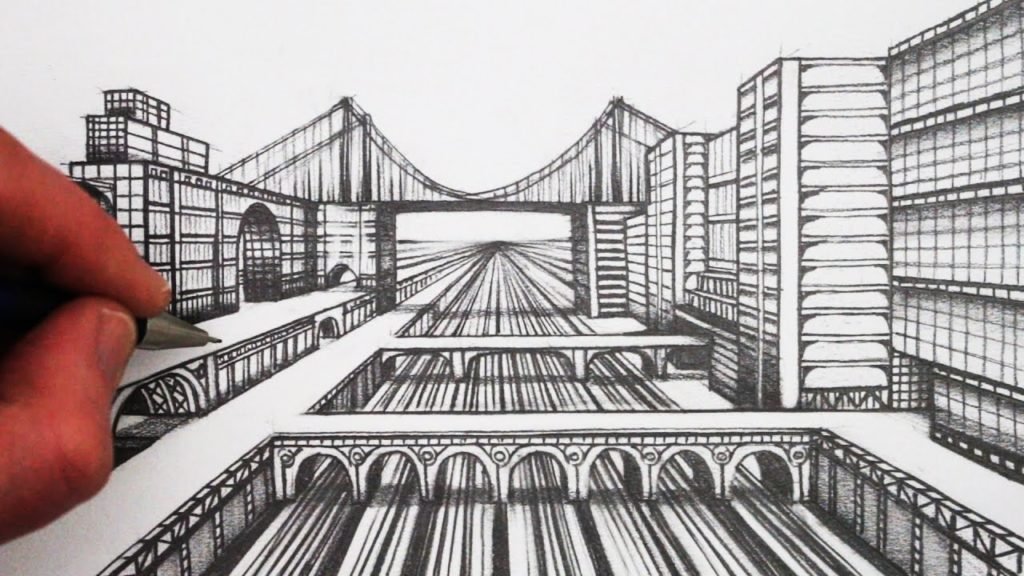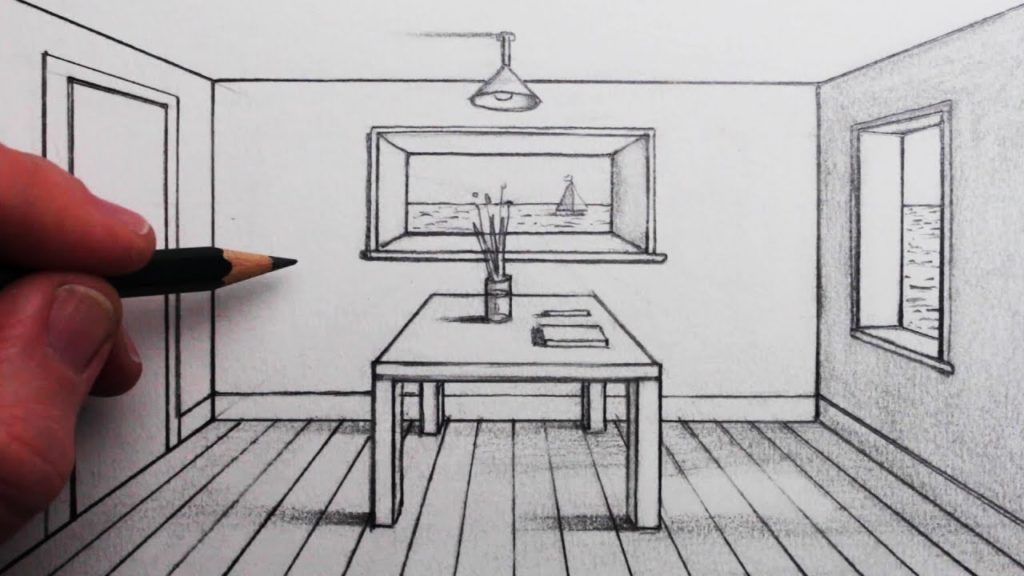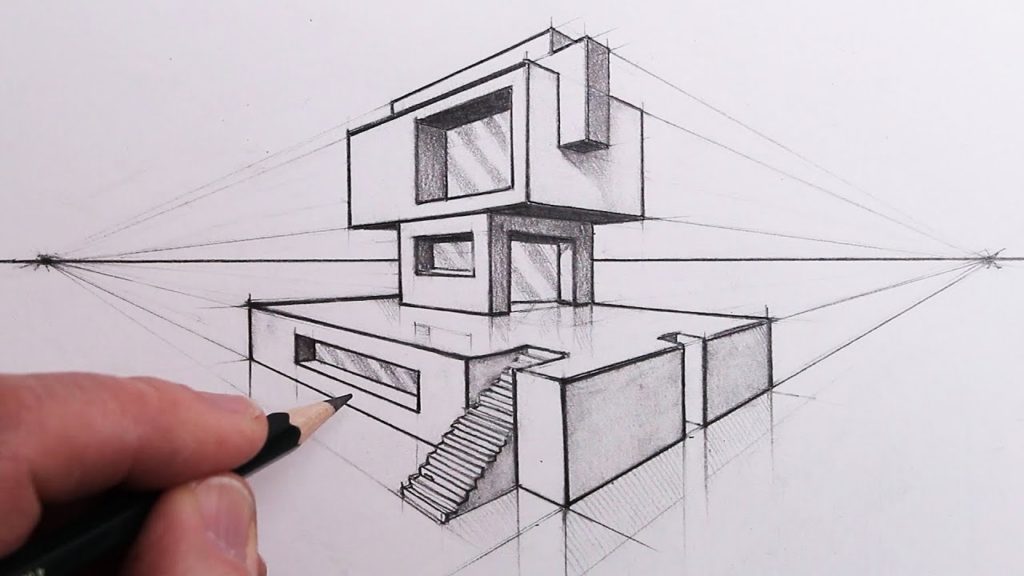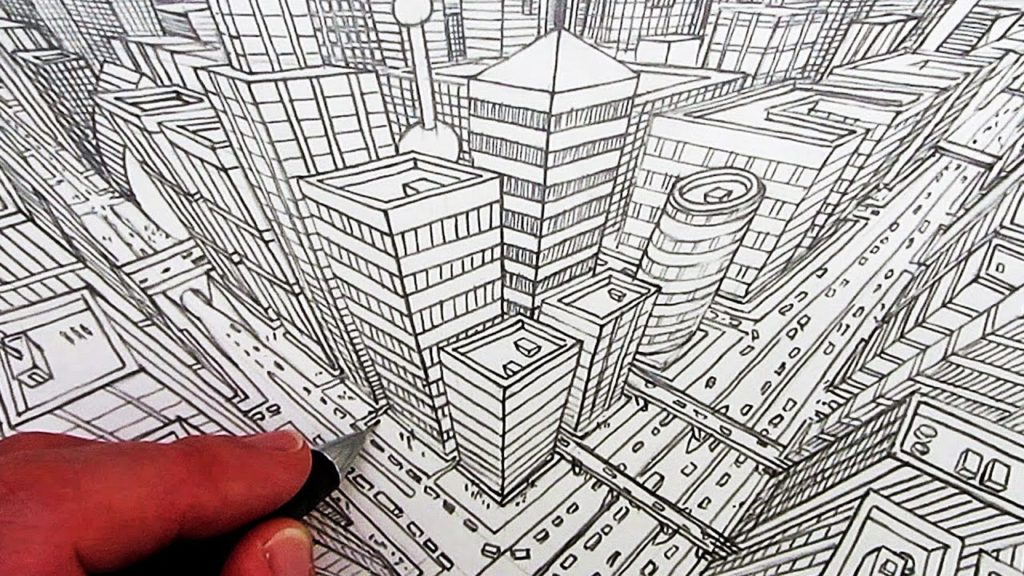Back to: CULTURAL AND CREATIVE ARTS JSS3
Welcome to class!
In today’s class, we will be talking about an introduction to perspective. Enjoy the class!
Introduction to Perspective

Perspective is the technique of creating an adequate or right visual representation of height, width, depth and position of a three- dimensional object on a two- dimensional surface, thereby creating the viewpoint that best communicates the subject matter to the audience. The principle of perspective cuts across branches of cultural and creative arts, ranging from film making to architectures, bridge building, graphic designs, painting, sculpting and anything that presents imagery to an audience.
Perspective in art is a highly useful tool for creating realistic art. It is based on how the human eye sees things. In its principles, objects that are closer to the viewer appear larger while the distance objects appear smaller as it progresses.
In art, perspective helps to establish the position from which the artist captures the scene on display. To achieve perspective in a work of art, an imaginary line is placed horizontally across the surface of the work of art in progress, otherwise known as the horizon line and another line placed vertically across the first otherwise known as the centre of vision. After this first step have been carried out which represents the position and distance from which the artist or spectator views the scene, the second step is engaged on, on the basis that parallel lines converge as they recede, and that they will eventually meet at the horizon line otherwise known as the vanishing point. Perspective can be grouped into two main types: linear and aerial.
Linear perspective has to do with the organization of shapes in space while aerial perspective deals with the effects on tones and colours, the tendency of faraway objects to appear hazy or slightly blurred as a result of the atmosphere.
Attributes of linear perspective
- The thin or imaginary horizontal line across the workspace where the air and the sky appear to meet.
- Varnishing point, which is a point where all the parallel lines seem to meet and gradually disappear.
- Orthogonal, that is active when two or more diagonal lines are drawn on existing receding parallel lines, and also when these lines meet at the vanishing point.
One-point perspective drawing:
This drawing is a linear perspective technique all is rendered with one vanishing point at the horizon line. In this technique, all the receding lines from the object meets and varnishes at a single point.

Two-point perspective:
This drawing is the technique of incorporating an angular use of two vanishing points in the horizon line of the drawing. On observation of the object in the drawing, receding parallel lines from the right side of the drawing are seen to meet and varnish at the right horizon line while the receding parallel lines from the left side of the drawing are seen to meet at the left horizon line. Therefore, consisting of two vanishing points on the horizon line of the drawing.

Three-point perspective:
This perspective drawing has three vanishing points, two straight on the horizon and one either above or below the horizon. In a three-point perspective drawing, the artist or spectator position or point of view on display is either below the horizon line otherwise referred to an ant’s eye view or above the horizon also known as bird’s eye view.
From the ant’s eye view of a building or object, the topmost point is referred to as the zenith (the highest point) while a view from the bird’s eye position, the lowest point is known as the Nadir (lower point).

The three-point perspective drawing technique is very effective for the interpretation of skyscrapers or high- rise buildings.
In our next class, we will be talking more about Still Life Drawing. We hope you enjoyed the class.
Should you have any further question, feel free to ask in the comment section below and trust us to respond as soon as possible.

I do not understand
Which part are you finding difficult to understand?
me too I don’t understand what you are saying